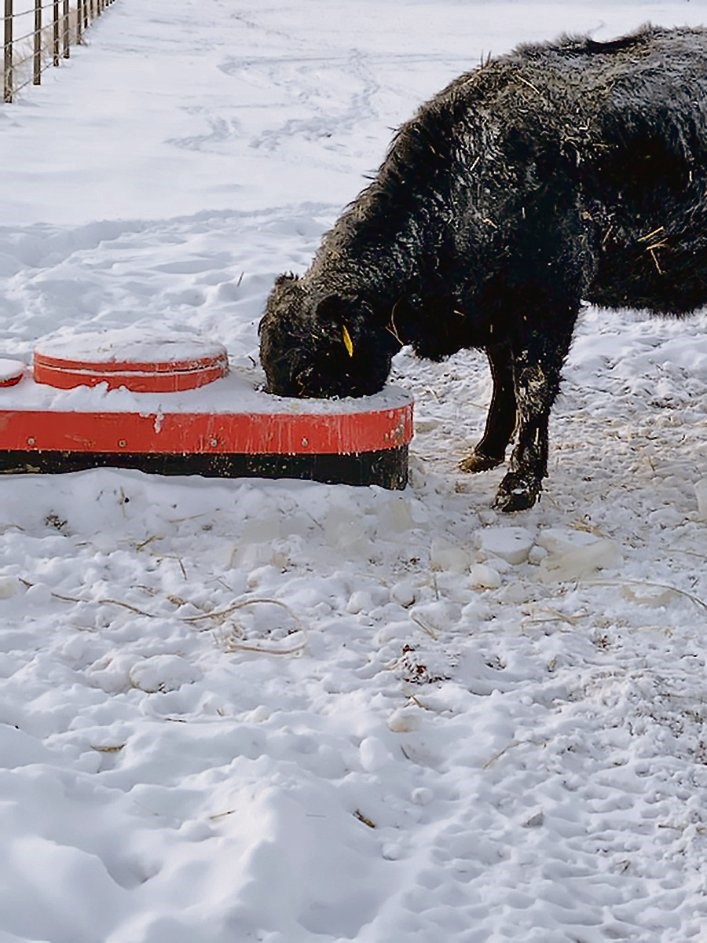OUTLOOK — Providing water to livestock in the freezing temperatures of the Canadian Prairies is accomplished in several ways. The most common method for watering livestock is a heated water bowl. The water level is controlled by a float valve on a pressurized pipe with a heating element powered by electricity to prevent freezing.
Finding ways to reduce power consumption or to provide winter watering options in locations where power isn’t conveniently available has resulted in many different approaches. Large-diameter holes to access ground heat can help keep valves and lines frost free. This approach works when the foundation around the bowl is sealed well and insulation below the foundation prevents frost from penetrating the ground.
Another strategy is to use the heat from the water itself to keep the valves ice free and operational. It may be a large-diameter trough insulated with spray foam and an insulated cover with drinking tubes installed, or it may be a dedicated appliance installed directly in the ground to take advantage of ground heat and water volume. The limitation with these waterers is they need to be in continuous use to stay ice free. Additional items installed with these types of waters include curb stop valves and installing a water heater that can be powered by a portable generator just in case something goes wrong.
Small huts built with lots of insulative capacity that use a drinking window to house a standard trough. Upgrades to these units often include an exterior door and a portable propane heater. Another producer uses a series of tire troughs with an artesian well flowing through them with an overflow to the natural low-lying area outside of the livestock pen. There are systems with sensor eyes and drain back bowls into wet wells, frost free nose pumps, and numerous iterations of float switched pumps powered by solar or wind charged battery banks filling insulated troughs. Trail cameras can be used to monitor watering sites year-round for additional peace of mind.
For assistance identifying a winter watering appliance that fits for your operation best, contact your local livestock and feed extension specialist or call the Agriculture Knowledge Centre at 1-866-457-2377.
— Dwayne Summach, Pag is a livestock and feed extension specialist at Outlook




